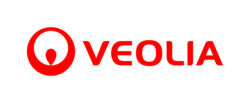Brightwater wastewater treatment facilityview supplier

Application:
Municipal
ZeeWeed
About Brightwater wastewater treatment facility
Commissioned/installed date: 2011
Average daily flow: 122 MLD
Peak daily flow: 175 MLD
Peaking at 216 MLD
Challenge
King County’s Wastewater Treatment Division services about 1.4 million people in the Seattle, Washington area. Due to expanding population in the region, a new regional wastewater treatment facility, the Brightwater Wastewater Treatment Facility (WWTF), was required. As the Brightwater WWTF discharges treated effluent into Puget Sound, protection of the marine environment was a key factor in the selection of the treatment process for the plant. In addition, King County wanted to be able to produce Class A reclaimed water, allowing reuse of the treated wastewater for non-potable applications such as landscape or agricultural irrigation, heating and cooling, and industrial processing.
Solution
During the initial predesign evaluation for the Brightwater WWTF, over 40 process technologies were considered. Of these, membrane bioreactor (MBR) and conventional activated sludge (CAS) treatment were selected for detailed evaluation. The detailed evaluation revealed that the MBR and CAS options would be nearly identical in capital cost, and that the MBR option would provide additional benefits that included:
- Production of high-quality effluent meeting Class A standards for reuse, which is seven to 10 times cleaner than effluent from a CAS system
- Reduction of TSS and BOD discharge to Puget Sound by 1,000,000 lbs each year
- Reduced earthwork and construction impacts
- Simplified odor control design for the plant
- Fully nitrified effluent, reducing oxygen demand in Puget Sound
- Positioning King County to cost-effectively address future regulations.
MBR technology was selected for the Brightwater WWTF. The procurement process, which included an evaluated bid between two MBR suppliers, resulted in the selection of Veolia Water Technologies & Solutions to provide ZeeWeed MBR technology for the project.
When awarded in 2005, the Brightwater WWTF was the largest awarded MBR in the world and as of commissioning was the largest MBR operating in North America.
Process Overview
The Brightwater WWTF treatment process begins with preliminary treatment, including coarse screening and grit removal. Following primary clarification, the wastewater passes through fine screens prior to entering the MBR. The biological treatment process includes both anoxic and aerobic zones, which will promote the removal of nitrogen from the wastewater, reduce aeration requirements, and improve the alkalinity of the system. The ZeeWeed membranes that form the basis of the MBR plant provide efficient solid/liquid separation, filtering out virtually all solid particles and even bacteria. The facility includes 10 parallel membrane trains, though initially only 8 trains will be populated, with each train containing 20 membrane cassettes to meet the current flow requirements.
The modular nature of ZeeWeed membranes allows for simple expansion for future flows; two trains are anticipated to be added within five years, with the option for additional trains in the future. Downstream of membrane filtration, the treated water is disinfected with sodium hypochlorite.
The Brightwater WWTF incorporates a novel treatment strategy for large influent flows. Flow rates up to the MBR capacity are processed through conventional primary clarification and the MBR system. Peak flow rates above the capacity of the MBR, however, are diverted, treated simply with chemically-enhanced primary clarification, and then blended with the MBR permeate. This approach was selected in order to most cost-effectively meet secondary treatment requirements for the full peak flows through the plant.
Carnation Wastewater Treatment Plant
An interesting aspect of the procurement process of this project was that King County combined the delivery of the Brightwater WWTF with the delivery of a smaller MBR plant, Carnation WWTP. MBR technology was selected also for Carnation WWTP, as this plant produces Class A reclaimed water that is utilized to enhance nearby wetlands. This smaller plant also served as a training and test site for the larger Brightwater plant. The Carnation WWTP has an average design flow of 0.39 MGD, and uses the same ZeeWeed membranes as the Brightwater plant. The Carnation WWTP started operation in May 2008, and a few months later was the recipient of the 'Small Project of the Year' award from the WateReuse Association.
Company summary
About this page
This page was last updated on 06 February 2023
Disclaimer
Information on this page may have been supplied by third parties. You are reminded to contact any third parties to confirm information is accurate, up to date and complete before acting upon it. TheMBRSite.com accepts no liability for information provided by third parties, actions taken on the basis of this information or information held on third-party websites.



